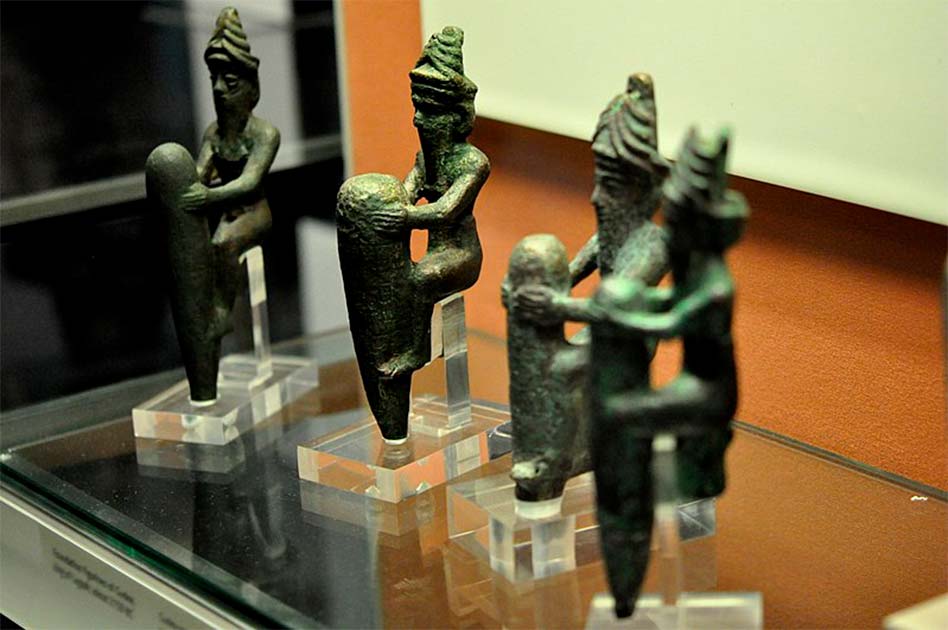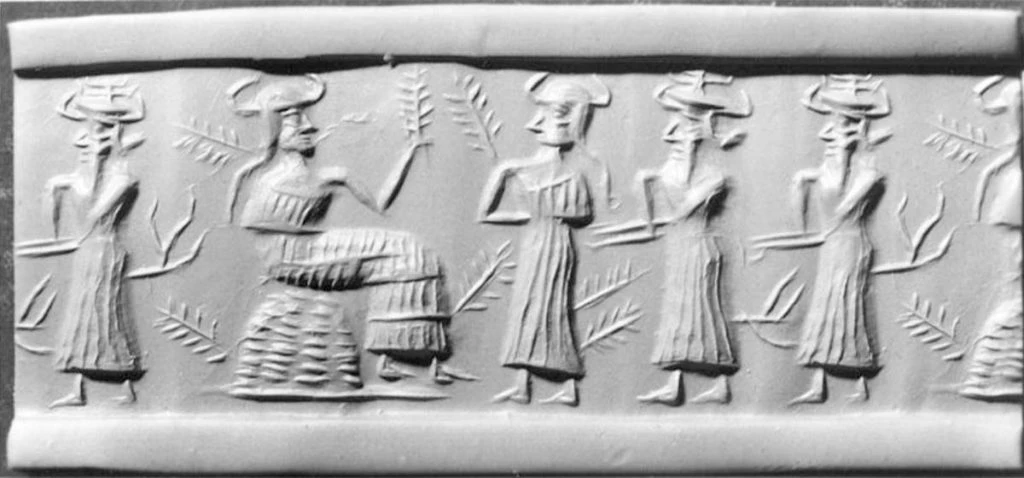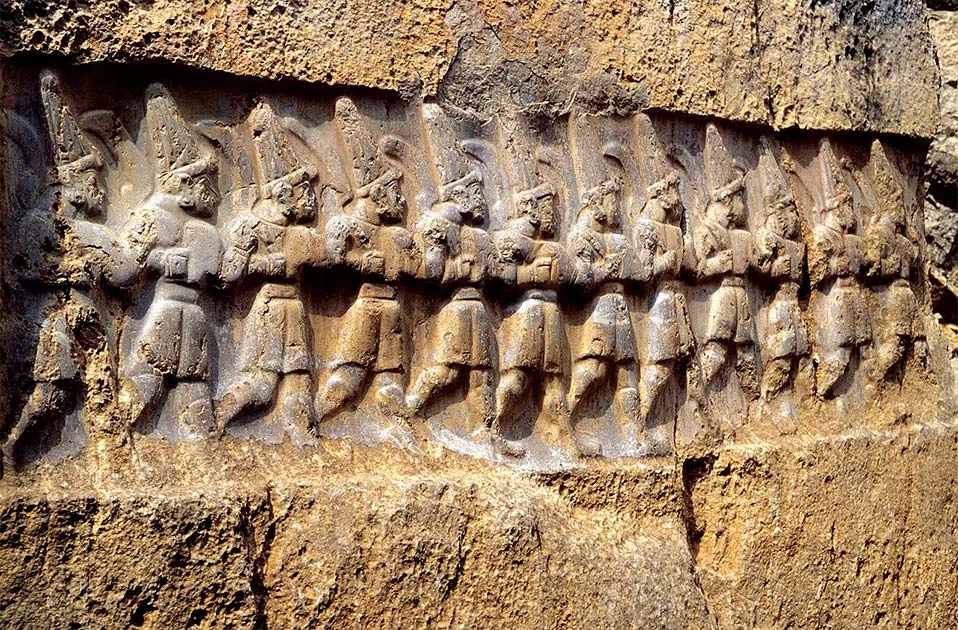Before Jesus and the God of the Hebrews, before Jupiter and Zeus, before even the gods of the Egyptians, there were the Anunnaki. And, as far as we can tell, these were the group of gods that were worshipped in the earliest of civilizations like the Sumerians, Akkadians, Assyrians and Babylonians.
In the earliest writings about them from the Sumerians in the third millennium BC, writing after the Akkadian period, the Anunnaki are a pantheon of gods that are descended from the god of the heavens An and the goddess of the Earth Ki. Their primary function was to dictate the fates of humanity, a tradition which appears to have lasted far further into the past.
The word Anunnaki word can be translated into “princely seed” in Sumerian but as a term it remains poorly defined. There is also little evidence of an exact number of these gods and their various functions as the historical texts all deviate from each other. However, they are fascinating as the first family of gods ever.
Anunnaki
The name Anunnaki can be seen to come from An, who was the Sumerian god of the sky or heavens. It was believed that the offspring came from a relationship with the Earth Goddess Ki.
Ki has been identified as also being the Sumerian Mother Goddess Ninhursag. From this relationship sprang the Anunnaki of which the oldest was called Enlil, the god of the air and the chief god in the Sumerian pantheon.

According to Sumerian beliefs, the heaven and the earth were inseparable until Enlil came along. Enlil split the heaven and earth in two and carried the earth away whilst his father An carried away the sky.
But already there are problems in the historical record. The information gathered from the Anunnaki comes mostly from literary texts written in a much later period.
There is little direct evidence to support a general worship of these figures from the very earliest part of human history. It has been suspected that this is because each of the Anunnaki would have had their own following or support completely separate from the others. This is not dissimilar to how the Greeks worshipped their gods with a focus often being only on one or two of them, for example Athena in Athens or Ares in Sparta.
There has yet to be uncovered an example of the Anunnaki represented as a complete group but there have been occasions where two or three members have been identified together. Gods in ancient Mesopotamia were pretty much exclusively anthropomorphic and thus showed human emotions but often were thought to have extraordinary powers or control over the elements.
In their descriptions and depictions, it is clear that these deities were thought of as large in size and usually wearing a substance that covered them in terrifying splendor. This substance, unknown to us, was known as Melam and was worn by heroes, giants and kings.
The ancient Sumerians believed that their gods lived in Heaven. They believed that the gods would visit the Earth and could do so by utilizing the statues found around the land.
Because of this, the Gods statues were giving constant care and attention with priests dedicated to their maintenance. These priests would be in charge of managing feasts to be brought to the statues as well as clothing the statues. The god’s temple would be their residence on Earth and so was equally cared for. The statues only left their temple for special occasions such as religious festivals or for war.
The Original Mythos?
The earliest written usage of the term Anunnaki comes from inscriptions written during the reign of the Sumerian King Gudea in the Third Dynasty of Ur. This reign was around 2144 BC to 2124 BC.
The term is mostly applied to the more powerful gods, the ones who are most directly descended from the sky-god An. It tends to refer to the seven gods who decree: An (the sky god), Enil (the air god), Enki (the water god), Ninhursag (the earth/mountain goddess), Nanna (the moon god), Utu (the sun god) and Inanna (the goddess of love and war).

There is no complete list of the Anunnaki that has survived and only in literary texts are they referred to as a cohesive group. Sumerian texts are also inconsistent when it comes to describing the pantheon.
- Uruk, the First Great City: A Leap Forward for Humankind?
- Animal Gods: The Ancient Egyptian and Hindu Pantheons
They do not agree on the set amount or what their divine role was. Every deity seems to have been associated with a specific city and was expected to protect the interests of the city and its people. It is because of this, that they believed the temple was the permanent residence of the gods.
However, one text claims that there were over 50 Anunnaki and all were associated with the city of Eridu. Whereas in the story of Inanna’s descent into the Netherworld, there are only 7 of them and they reside in the Netherworld. That story has the 7 Anunnaki act as judges against Inanna who attempted to take over the underworld.
Additionally, these deities seemed to have been associated with specific celestial bodies. Inanna was associated with the planet Venus, whereas Utu was believed to be associated with the sun. His counterpart was Nanna who was the moon.
An was linked to the stars of the sky with Enil more specifically the stars of the northern sky. Enki held the stars of the southern sky. The path of Enil’s orbit was a continuous circle that went around the north pole and was intersected by An and Enki at various points. These were complex figures but not dissimilar to those found in other regions around the world.
Due to their mysterious nature, there have (inevitably) been complex conspiracy theories posited around the ideas of the Anunnaki. Some people believe that these beings were extra-terrestrial creatures that visited the planets and that the stories of them were created by humans in order to explain their existence.
David Icke, a British conspiracy theorist, has suggested that the Anunnaki were reptilian overlords and that the Aryan race is descended from them. This fits into his theory that the world is controlled by lizards masquerading as world leaders.

Nonetheless, this seems unlikely. What is remarkable is that these gods bear a passing resemblance to those found in Greece much later on and it is possible that the Greek gods were derived from the Sumerian Anunnaki. As far as we can tell, these were the very prototypes of polytheism.
Top Image: Gods of the Anunnaki on an Akkadian seal dated to around 2,300 BC. From left to right: Inanna, Utu carving a hole in a mountain, Enki with the fish shoulders and his literally two-faced Vizier Usimu. Source: British Museum / Public Domain.
By Kurt Readman